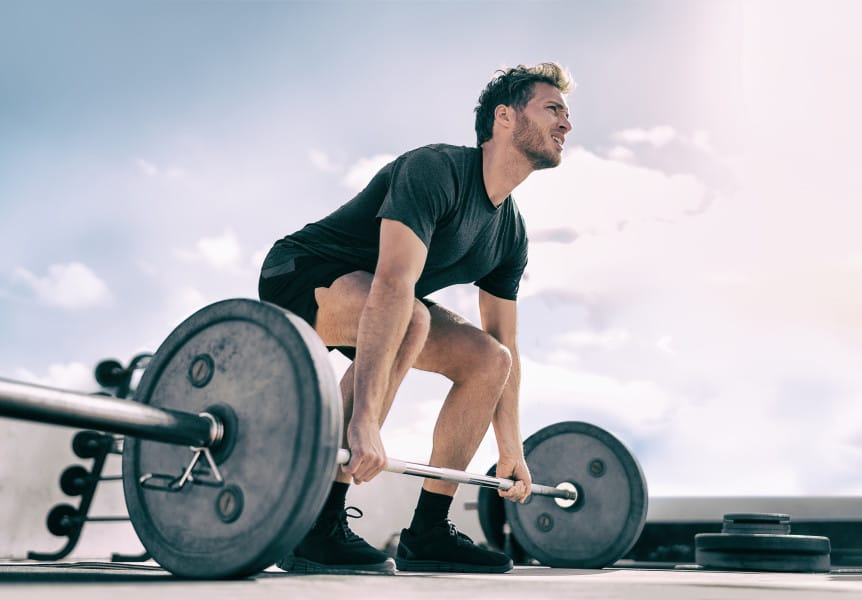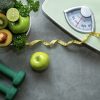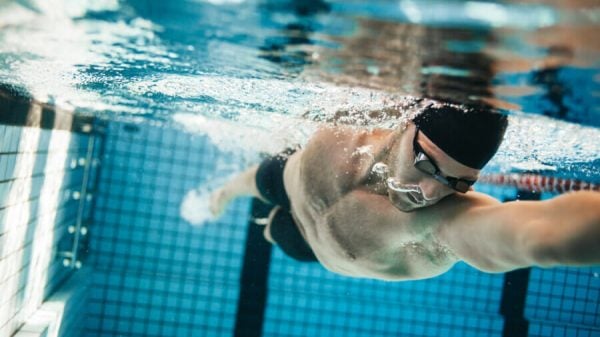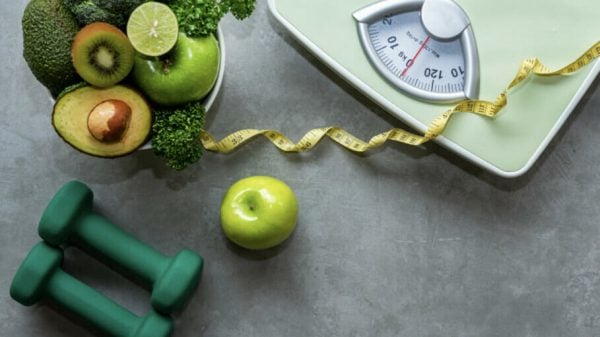Go to the weight space of any gym, and you’re likely to see someone performing a deadlift. And for a good reason: Deadlifts are one of the fundamental strength-training exercises. Some individuals even call them “the king” of all exercises. But which muscles do deadlifts target? Basically all the largest muscle groups in the lower half of your body, plus your core, shoulders, and forearms. Yeah, they’re serious business.
Evidently, deadlifts can be one of the most effective exercises to integrate into your leg workout. But if you aren’t already doing them, we understand: Barbell deadlifts in particular can be daunting for novices. We’re here to assist, because understanding the muscles targeted by deadlifts can help you concentrate on how you should be executing deadlifts and which muscles you should feel engaging during this exercise.
The muscles affected by deadlifts
Conventional deadlifts are more intricate than they might appear to be at first sight, says Loyola Marymount University associate professor of health and human sciences Jen Roper, PhD, CSCS. “It includes triple extension—you are extending at the hip, knee, and ankle (plantar flexing to be exact),” she says.”
Dr. Roper mentions that this implies the chief muscles targeted by deadlifts are the gluteus maximus, the hamstrings, and the quadriceps. “The gluteus maximus and the hamstrings are responsible for extension at the hip, while the quadriceps are responsible for extension at the knee,” she explains. (Note that in anatomical terms, extension refers to the straightening of a joint, so hip extension is straightening your leg at the hip, knee extension is straightening the knee.)
However, your lower body isn’t the only area involved. “With proper form, your forearms engage from holding the bar; your shoulders, traps, back, and core help stabilize the body; and your glutes and hamstrings act as a lever to lift the weight,” LaNiecia Vicknair, a corrective exercise specialist and founder of Thrive Health Lab in Los Angeles previously told Well+Good about the full-body benefits of deadlifts. If you’re wondering which muscles should ache after a deadlift session, the answer is all of the above.
That being said, there are several deadlifting exercises, specifically conventional deadlifts, stiff-legged deadlifts, and Romanian deadlifts, and Dr. Roper points out that each of these tests the muscles in slightly different ways. Nevertheless, those hammies, glutes, and quads will get targeted no matter what.
Performing a deadlift
Dr. Roper takes us through the process of executing a conventional barbell deadlift with the right method:
- Stand with your feet flat on the floor about shoulder-width apart. You can have the toes pointed slightly outward. Place the barbell about one inch in front of your shins and over the balls of the feet.
- From this position, squat down with the hips lower than the shoulders, and grasp the bar with a closed, pronated grip (overhand). For heavier loads, you may opt for a closed, alternated grip (one overhand position, one underhand position). Either way, your arms should be fully extended.
- Before beginning the movement, make sure your torso is in the correct position: neutral spine, shoulders back, head in line with the spine, heels on the floor, shoulders over or slightly in front of the bar, eyes looking straight ahead or even upward.
- Start by extending the hips and knees and lifting the bar up off of the ground. Ensure your torso and spine remain in a neutral position throughout the movement and keep the bar as close to the shins as possible (think of scraping the bar along your shins as you continue through the upward phase). Continue until you reach full extension in the hips and knees, and your torso is upright.
- After you’ve reached full extension, slowly lower the bar to the floor by bending the hips and knees while maintaining a neutral spine as you return to the starting position.
Watch trainer Roxie Jones exhibit proper form with a kettlebell:
Preventing common deadlift errors
Despite deadlifts being reasonably simple, there are various typical mistakes that athletes of all levels sometimes grapple with. Here’s how to prevent and rectify them:
Observe your timing and sequencing
Dr. Roper states that a common deadlift blunder is letting your hips rise faster than your shoulders when you lift the bar.
“This can put a lot of stress on the lower back,” she says. “You want to make sure you keep your initial torso-to-floor angle as you progress through the upward phase of the movement.” Read: Don’t let your upper body become parallel to the ground.
Maintain a straight back
“As the load increases, sometimes people can start to round at the back and hunch their shoulders,” says Dr. Roper. “Again, this can stress the back unnecessarily.” She says that flexing the spine or rounding the back is particularly common when you are lowering the barbell back to the floor during the deadlift execution.
The solution: Concentrate on keeping those shoulders reaching back throughout the movement to help maintain a neutral spine.
Be mindful of your foot positioning
People sometimes deadlift with their feet too close together, or pointing too far out to the sides. Remember to keep your feet between hip-width and shoulder-width apart with your toes pointing forward or slightly outward, but not turned out significantly like a ballet dancer.
Use the proper equipment
To support your lower back and diminish the risk of back injuries while deadlifting, Dr. Roper recommends that you use a weightlifting belt if you are planning to lift heavy weights with your deadlift workouts. “Heavy” is a relative term, but if you’re lifting maximal or near-maximal loads for your ability, a belt will come in handy.
“Weight belts can lessen the training the abdominals do during the movements, so only use them when necessary. Also, use of the Valsalva Maneuver [holding the breath] during deadlifts can increase the rigidity of the torso, allowing you to better maintain proper posture throughout the lift,” she advises. “But, don’t hold your breath too long, as it increases your blood pressure and can make you lightheaded.”
How do deadlifts transform your physique?
Deadlifts are an excellent way to fortify your lower body and core, says Dr. Roper. Doing them regularly can help you better perform everyday activities. “The conventional deadlift employs a standing up motion, so it will help strengthen muscles used when picking up things from the floor or even simply standing up from a seated position,” she says.
The hip hinge movement pattern can also help enhance your performance for other exercises like squats or lunges, and dynamic movements like jumping and rowing—essentially, any movement that necessitates hip and knee extension.
What is the optimal method to incorporate deadlifts into your workout regimen?
Dr. Roper states that because deadlifts are a compound exercise, meaning that they work multiple joints and muscle groups simultaneously, you should include deadlifts at the start of a workout when your body is fresh, rather than at the conclusion of the session.
The ideal volume and load for your deadlift workout will differ based on your goals. Here’s what Dr. Roper recommends:
- For strength: Up to 6 reps at 85% of your one-rep max (1RM) for 2 to 6 sets
- For power: 3 to 5 reps at 75-85% of your 1RM for 3 to 5 sets
- For larger muscles: 8 to 12 reps at 67-85% of your 1RM for 3 to 6 sets
- For muscular endurance: At least 12 reps at 67% or less of your 1RM for 2 to 3 sets
What are the finest deadlift variations?
According to Dr. Roper, stiff-legged deadlifts and Romanian deadlifts are excellent alternatives to try, particularly if you’re rehabilitating an injury that may be irritated by conventional deadlifts. That’s because the restricted range of motion of these deadlift variations isolates the muscles worked mostly to those involved in hip extension. “The chief muscle groups responsible for hip extension are the gluteus maximus and the hamstrings (alongside the erector spinae), with the Romanian deadlift emphasizing more of the gluteus maximus and the stiff-legged deadlift emphasizing the lower back due to great range of motion at the hip,” explains Dr. Roper.
She also advises trying trap bar deadlifts, especially if you’re a novice seeking deadlift alternatives. “The trap bar enables you to maintain the correct posture, which can be challenging when lifting heavy with the barbell,” she advises. “It also allows you to target the quadriceps a bit more than conventional deadlifts.”
Additionally, don’t overlook the sumo deadlift. “This entails a wider than shoulder-width stance with the toes pointed outward and hands grasping the bar between the legs,” explains Dr. Roper. “It places less stress on the lower back and knees, while enhancing hip mobility and increasing emphasis on the glutes (due to the external rotation of the feet).”
And if you’re completely new to deadlifts? Consider commencing with bodyweight deadlifts to get accustomed to the movement pattern and to build up strength in the deadlift muscle groups. Once you get comfortable and build that foundational strength, the world of deadlifts is your oyster.










